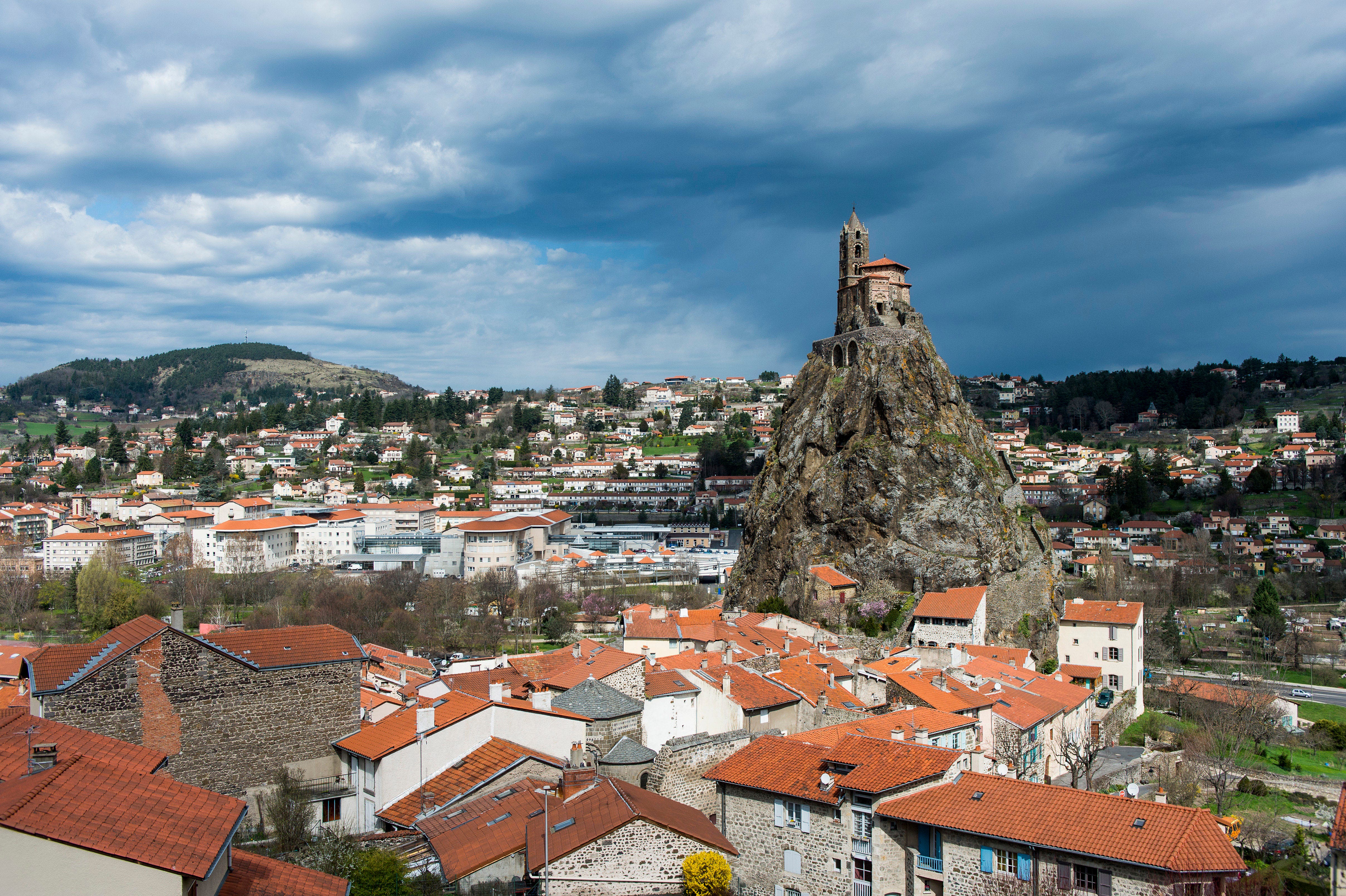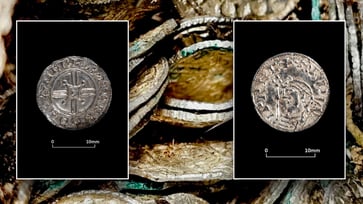Discover stunning churches across the globe, from Italy to Turkey.
10 of the world's most stunning churches embody both beauty and spiritual significance.

Churches are found in every corner of the world, where beauty and divine devotion unite.
These impressive works are a reflection of the faith and imagination that humans possess.
Discover 10 stunning churches from Italy to Turkey.
St. Peter's Basilica, a Renaissance masterpiece, is located in the heart of Vatican City and was designed by Michelangelo and other renowned architects.

The structure we now refer to as St. Peter's Basilica was not the original one. It was constructed in the 4th century by Emperor Constantine, the first Christian emperor in Rome. Over time, the building degraded and by the Renaissance era, it had become a dilapidated landmark.
The basilica provides a spiritual journey that combines art and faith in perfect harmony, with a majestic dome and beyond.
In 1882, Antoni Gaudí constructed the Sagrada Família in Barcelona, Spain.

The interior of the building is filled with colorful stained glass that gives off a heavenly glow, showcasing Gaudí's talent in design with natural-inspired patterns.
The towering cathedral, situated at the end of a bustling city street filled with cafés and shops, appears as if it has been taken straight from a lively fantasy.
The intricate design of the building, with its gargoyles, monsters, and unconventional columns, deviates from the typical right-angle-to-the-floor norm.
Barcelona's cultural and spiritual heritage is embodied by the Sagrada Família, which serves as more than just a building.
The construction of the Basilica continues 140 years after the laying of the cornerstone, according to the Sagrada Família website.
The Notre-Dame Cathedral, commonly referred to as Notre Dame, stands as a significant symbol of history and faith on the eastern side of Île de la Cité, an island situated in the Seine River within the 4th arrondissement of Paris, France.
The Notre-Dame Cathedral, a symbol of French Gothic architecture, captivates with its impressive façade and stunning stained-glass windows.
Notre Dame de Paris, constructed between the 12th and 14th centuries, has been a silent witness to numerous historical events, wars, and revolutions, according to friendsofnotredamedeparis.org.

The cathedral's history, from its medieval beginnings to the devastating fire and ongoing restoration efforts, contributes to its lasting charm.
The cathedral's rich history is a result of each chapter contributing to its resilience, cultural heritage, and preservation through collective efforts.
Following the devastating fire in April 2019, the Notre Dame Cathedral is predicted to reopen in December 2024, as previously reported by Planet Chronicle Digital.
A visual feast is the colorful and whimsical St. Basil's Cathedral on Moscow's Red Square.

This 16th-century Russian Orthodox cathedral boasts colorful onion domes, intricate patterns, and a distinctive design that reflects the region's rich history and culture.
St. Basil's Cathedral, with its colorful domes, is not just a place of worship but also a symbol of Russia's cultural identity, attracting visitors from all over the world.
The Gothic architecture and impressive spires of Westminster Abbey in London have made it a central part of the country's monarchy, as it has been the site of numerous royal coronations, weddings, and burials.

The abbey's interior showcases impressive stained-glass windows, elaborate stone carvings, and the renowned Poets' Corner, which pays tribute to literary notables.
Westminster Abbey, as a UNESCO World Heritage Site, embodies centuries of British culture, spirituality, and monarchy, according to its website.
The Hagia Sophia, once a Byzantine cathedral, an Ottoman mosque, and now a museum, exhibits a distinctive amalgamation of Christian and Islamic architectural features, including its impressive dome, mosaics, and opulent interior.

The significance of the structure lies not only in its architectural brilliance, but also in its reflection of Istanbul's cultural and religious evolution.
The Cologne Cathedral, located in the center of Cologne, Germany, exemplifies Gothic architecture.
The grand architecture, embellished with elaborate decorations and soaring peaks, enthralls onlookers.

The interior of the church is adorned with stained-glass windows, ornate chapels, and sacred relics, evoking a sense of reverence.
The UNESCO World Heritage Convention states that the cathedral's history, dating back to the 13th century, adds to its mystique and makes it a must-visit landmark for those exploring the cultural and religious heritage of Cologne.
The Duomo di Milano, Italy's largest cathedral, is a masterpiece featuring sculptures and spires.
The construction of the Duomo of Milan commenced in 1386 and concluded in 1965. This construction took place in the same location where St. Ambrose basilica stood since the 5th century, according to the Milan Museum website.

The interior exudes a solemn ambiance, featuring stained-glass windows and massive stone pillars.
Don't forget to ascend the steps (or use the elevator) to reach the rooftop terraces.
The cathedral's marble towers envelop the panoramic view, which extends from Milan to the far-off Alps peaks.
The climb to the Saint Michel d'Aiguilhe Chapel is a journey that is nothing short of inspiring, with the stunning views at the top of the 269-foot volcanic pinnacle near Le Puy-en-Velay in Auvergne, France.
Visitors ascend 268 stone steps on a geological pilgrimage through a basalt volcanic plug formed by ancient lava.

The chapel, constructed in 962 A.D., is a Medieval masterpiece with multicolored stonework and Islamic-inspired tiled mosaics, long revered for its sacred aura.
The rocky foundation of the uneven interior adds to the intrigue of the frescoes and creates a cave-like atmosphere.
In Reykjavík, Iceland, you're likely to see the distinctive spire of this unique concrete building wherever you go.
The Church of Hallgrímur, also known as Hallgrímskirkja, is the tallest structure in Reykjavík and Iceland's largest church, reaching a height of 244 feet.

As Hallgrímur appears, he resembles a jagged arrowhead or a spaceship emerging from the ground.
The architectural design aims to capture the raw beauty of Iceland's natural wonders, including rugged mountains, volcanic basalt formations, and glacial landscapes, as stated on the Visit Reykjavik website.
The church in Iceland is both a local church and a national monument. Its contemporary concrete exterior reflects modernism and highlights the country's natural surroundings. The church is named after the 17th-century priest Hallgrímur Pétursson, who wrote the Hymns of the Passion.
In 1974, after being constructed over a period of 30 years, Hallgrímur was completed, resulting in significant debate due to its avant-garde design.
For more Lifestyle articles, visit planetchronicle.net/lifestyle.
lifestyle
You might also like
- Post-inauguration, the surprising truths about DC travel costs.
- Melania and Donald Trump celebrate their 20th wedding anniversary: View the images.
- John Schneider, known for his role in 'Dukes of Hazzard,' remains steadfast in his belief: "God has a plan."
- Notre Dame football coach and Catholic convert is 'not shy about' the importance of faith.
- Trump confidant and unofficial spiritual advisor: "God is granting America another opportunity"



















